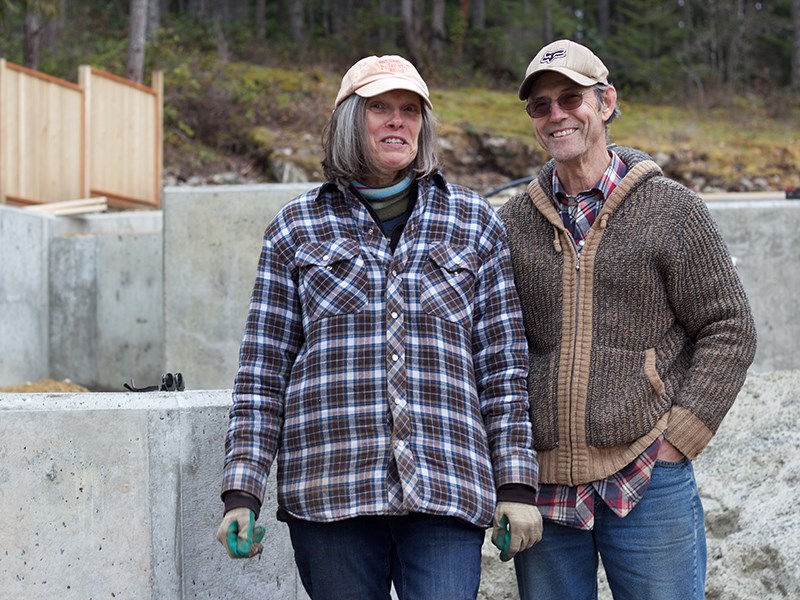Powell River’s first carriage house is under construction.
“This is what we call the accidental carriage house,” said owner Henry Robitaille, explaining how the project has evolved.
When Henry and his wife LaVerne decided the new residence they are building in Cranberry needed storage, their original plan was to add a shed and carport.
Then in December 2017, Henry met with City of Powell River building inspector Graham Stewart.
“When they were talking about foundation work for the carport and shed, he just happened to ask Henry if we were going to be doing the shed or the carriage house for the permit,” said LaVerne.
In November 2017, after a year-long process, the city approved carriage houses, which are secondary rental dwellings separate from a main house.
“Henry came home and said, ‘Guess what? We could, conceivably, change the shed to a carriage house,’” said LaVerne. “We had great discussion about that and felt this might be interesting for us.”
For the city’s planning department, the Robitaille’s project cannot have provided a better example of the carriage house bylaw.
“It's extremely satisfying in the sense that we're seeing a new build out of their principal dwelling and they are incorporating a carriage house,” said city senior planner Jason Gow.
The city has met with 10 parties interested in the carriage house option, including some who are in the designing stage, with three official applications received to date.
“We have a range; I'm excited that this one isn't the conversion of a 40-year-old structure,” said Gow. “I'm not suggesting that is an impossible conversion, I'm just saying it probably doesn't meet the intent of what we were trying to establish. Again, there are some very talented people out there who could go through the process and create a fine living space out of an older structure.”
The Robitailles found their contemporary design online; it includes 400 square feet and a loft.
“We happened to find a perfect little plan, 12 feet by 16 feet, and Henry and I looked at it and said, ‘This looks like it would work,’” said LaVerne. “That's how it has evolved.”
The couple expected to run into roadblocks at city hall, but that didn’t happen, said Henry.
A variance still remains that will allow for building the unit at the front of the property, whereas the goal of the bylaw is to have carriage houses at the rear of the principal dwelling.
City council’s approval of the variance for the Robitailles is expected to be a foregone conclusion, according to Gow.
Under the Local Government Act, the city can be more stringent in terms of material, site and design of carriage houses than in other development permit areas.
“We can get into the actual discussion of materials,” said Gow. “We have the ability to shape those applications and we'll use them.”
The carriage house will provide multiple purposes for the Robitailles. Rental income will offset their mortgage.
“It will give somebody a place to live as well,” said LaVerne.
Gow said renting out long term is exactly what the city wants to see with carriage houses. The bylaw does not give the city authority to regulate how and to whom carriage houses are rented, which is an important consideration for the city as it looks to regulate the short-term vacation rental market from online platforms such as Airbnb.
“We want to support carriage houses, but for people to build these units and then turn around and rent them as an Airbnb, that wasn't our intent,” said Gow.
Airbnb was never the intent for the Robitailles, either.
“Carriage homes are great additions to the community,” said Henry. “They have a practical purpose in terms of the housing market today.”



